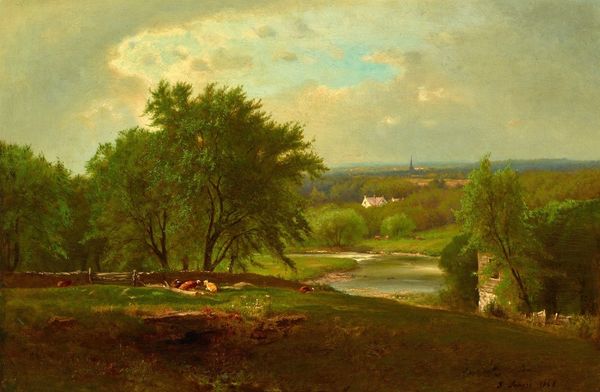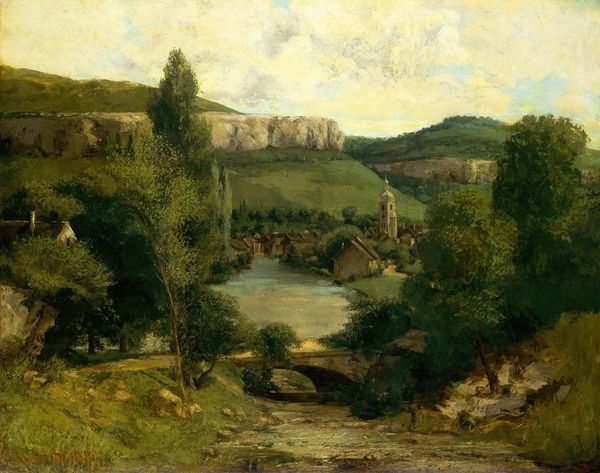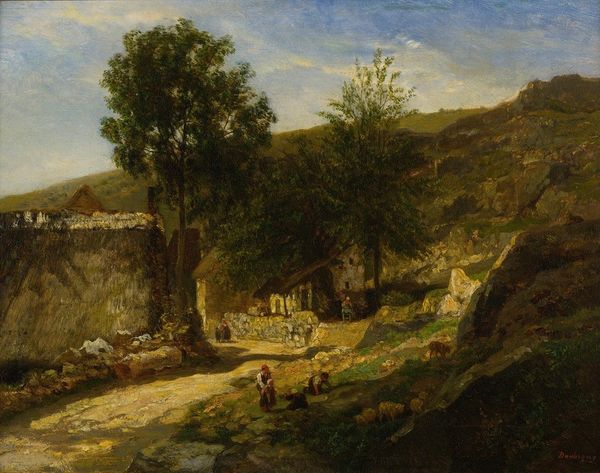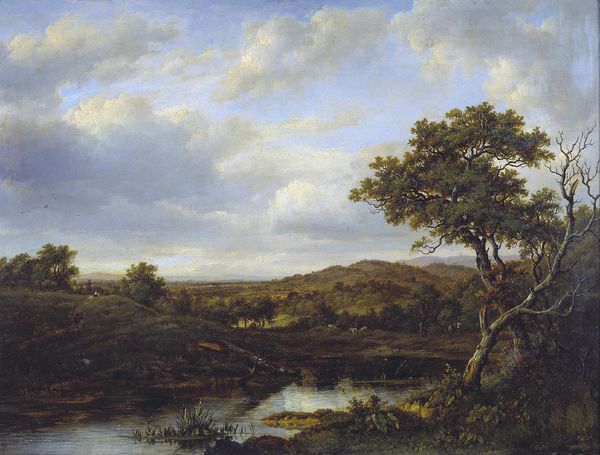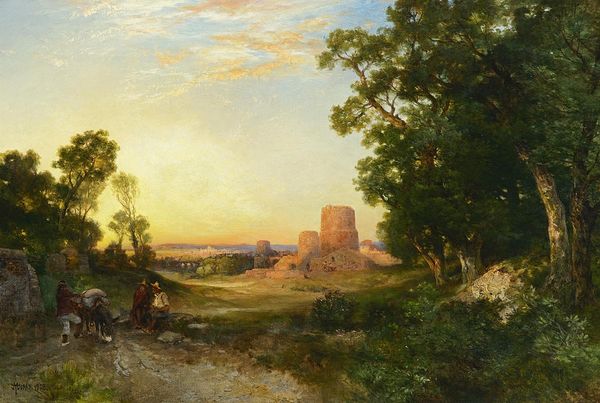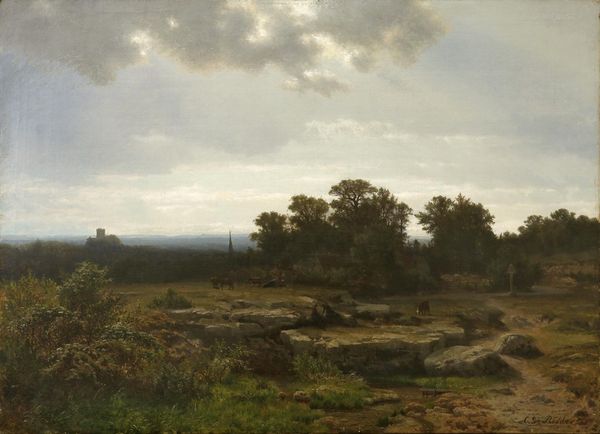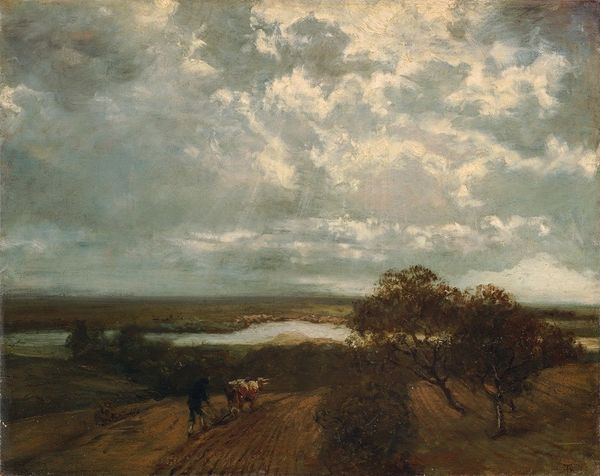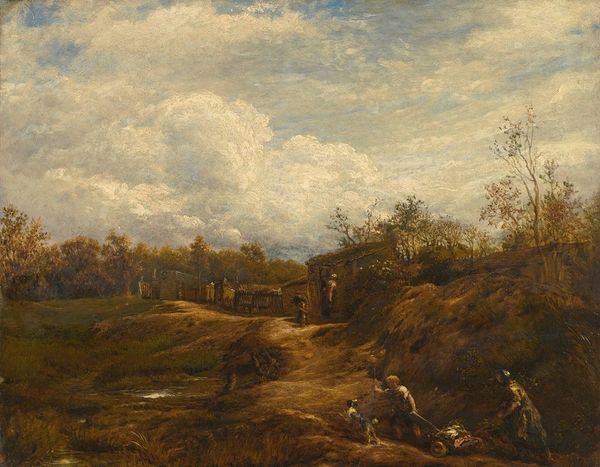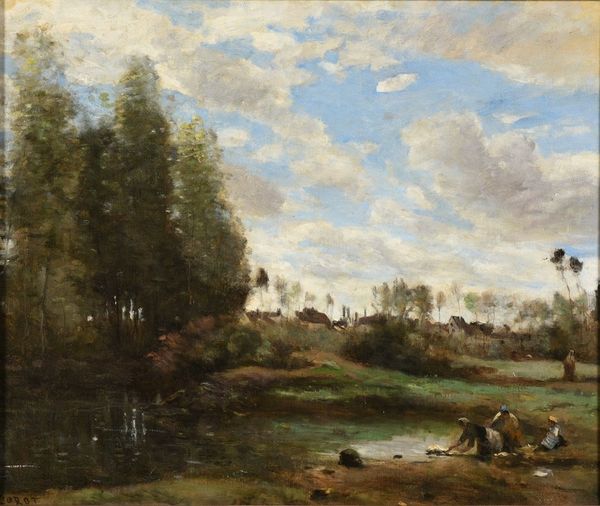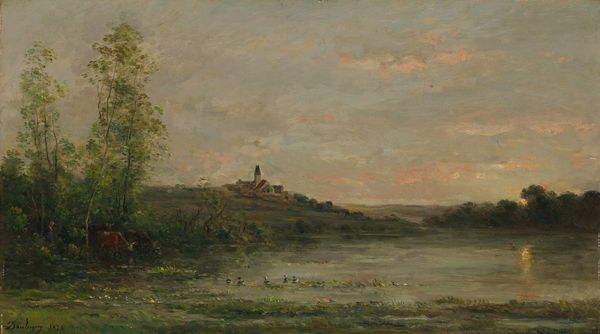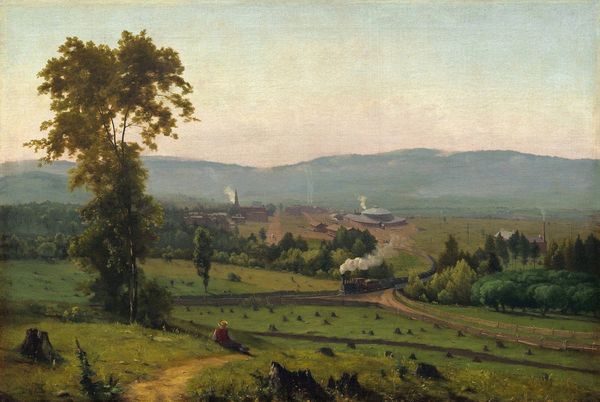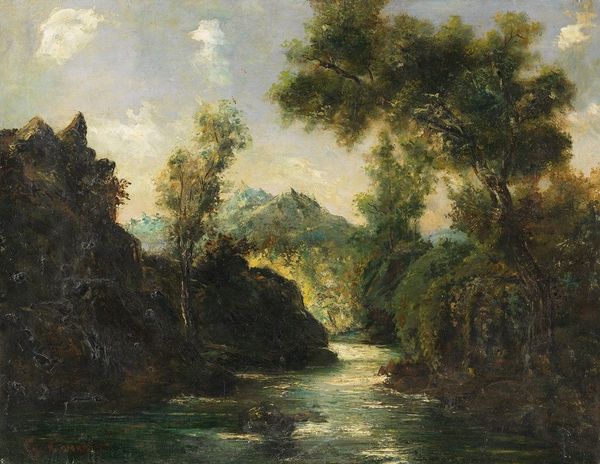
plein-air, oil-paint
#
plein-air
#
oil-paint
#
landscape
#
german-expressionism
#
oil painting
#
romanticism
Copyright: Public Domain: Artvee
Editor: So, we're looking at Carl Spitzweg’s "Landscape with River," an oil painting done in plein-air style. I’m struck by the way the light seems to be concentrated on the valley below, contrasting with the darker, stormier sky above. What do you see when you look at this piece? Curator: For me, Spitzweg's romantic landscape operates on multiple levels. We must think about what landscapes meant to viewers at this time. Nineteenth-century landscape painting often became a proxy for national identity, especially in the German states before unification. Editor: So, the landscape isn’t just a pretty view? Curator: Precisely. It's tied to socio-political concepts. Look at the figures on the path, they are strolling but away from town: do they look unified to you, part of some grand scheme? It suggests the beginnings of middle class leisure that allowed such practices as simply contemplating nature, which also spurred art collecting. Editor: That makes sense. I hadn't really thought about the viewers of the time. Are you saying paintings like this helped define German identity? Curator: Certainly. In some circles art's very purpose was to foster national pride and cultural cohesion. Landscape became a vital arena for that project. Look how the style, and that subject of 'Germany' has shaped our view of these paintings today. It can be hard to escape a purely national view of German Romanticism. Editor: Wow, that gives me a completely different way to think about landscape painting. I guess there’s a lot more to these images than meets the eye. Curator: Exactly. Understanding the historical context is crucial. That's what unlocks deeper meaning. Editor: Thanks, I’ll definitely remember that from now on!
Comments
No comments
Be the first to comment and join the conversation on the ultimate creative platform.
